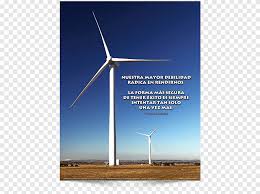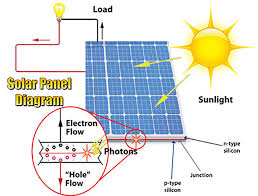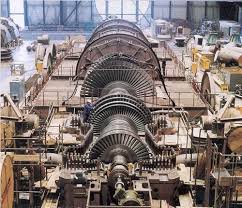Renewable energies are the talk of the global economy for 2022 and its prospects are expanding internationally:
Advantages of renewable energies:
1/Available in most countries of the world
2/Does not pollute the environment, and maintains the general health of living organisms.
3/Economical in many uses.
4/Ensure its continued availability and presence.
5/Uses uncomplicated techniques.
6/Not implemented and renewed constantly.
7/It does not contribute to greenhouse gas emissions that pollute the environment
8/Reducing heat emissions from power generation
In this article, we will show the sources of renewable energies, their advantages and economic investments:
1& Wind Energy:
Wind energy is defined as the energy resulting from the movement of wind by converting it from kinetic energy to electrical energy, through wind turbines (the principle of energy transformation). Determining the locations of wind fields depends largely on the study of wind movement activity in the region, and this is measured by means of geographic studies, satellites, and sensors.
Advantages and disadvantages of wind energy is a local renewable energy and does not produce greenhouse gases or pollutants, such as carbon dioxide, nitric oxide or methane, and therefore its harmful impact on the environment is slight. 95% of the land used as wind fields can be used for other purposes such as agriculture or grazing, and turbines can be placed on top of buildings. A recent study showed that for every million kilowatt-hours of annual wind energy production, 440-460 jobs were created.
Wind technology for electric power generation is the fastest growing source of new electricity generation globally. Energy is produced from wind by means of three-armed wind turbines powered by wind engines placed on top of tall towers and working as fans work, but in the opposite way. Instead of using electricity to produce wind as fans do, these turbines use wind to produce energy. The process is carried out by the wind running the engine arms, which in turn drive the shaft cylinder connected by a set of gears that form a transmission to drive an electric generator. Large-sized turbines designed for electricity production facilities for public use can generate between 650 kilowatts (one kilowatt equals one thousand watts) and 1.5 megawatts (one megawatt equals one million watts). Homes, telecommunication stations and water pumps use a single small turbine of no more than 100 kilowatts as their power source.

2& Solar Energy:
Solar energy can be benefited from by one of the following technologies:
Photovoltaic energy PV
- Concentrated Solar (Thermal) Energy CSP
Photovoltaic energy is defined as a group of solar cells that convert light from the sun into electrical energy. Photovoltaic energy can be used in applications of different sizes such as photovoltaic power plants and what we see on the roofs of some buildings and homes, in addition to road lamps, traffic signs and other applications. Note that photovoltaic energy can be stored during the day and used after sunset.
Concentrated solar energy (thermal) is a technique of exploiting heat from solar radiation falling on the ground to produce electricity, by using mirrors to focus a large amount of sunlight on a receiver containing a fluid to heat it, which is then used to produce steam and run turbines to generate electricity. Concentrated solar energy can also be used in some industrial applications and for water heating in buildings.

3& Hydropower:
It is also a type of renewable energy, where the kinetic energy of running water is used to move turbines or turbines in a circular motion, and the turbines in turn are connected to an electric generator that rotates with the turbines in a magnetic field, thus generating electricity.
There are several ways to generate electrical energy from the kinetic energy of water, including:
Generating electricity from the potential energy of water
pumps are used to raise water to a certain level when there is a surplus in the normal electrical production, and it is kept at this level. And when the demand for electricity at corn times becomes more than the production capacity of the power plant, the water that was kept at a high level is lowered in specific quantities through pipes until it reaches a turbine connected to an electric generator, which rotates and rotates the generator and electricity is produced (this method can be likened Sort of by battery, where energy is stored and retrieved when needed)
Generating electricity from the kinetic energy of rivers:
The kinetic energy of the rivers is used to move turbines connected to an electric generator, thus generating electricity. (This method generates irregular electricity, so dams are used to determine the amount of water passing through the turbines and thus determine the amount of electricity produced).

4& Biopower:
It is the collection of gases emitted from plant wastes such as trees and vegetables and the remains of sugar cane residues and other wastes that emit and emit gases, including methane, which is collected and used later in many applications, including the operation of electric power stations by burning, such as natural gas (fossil) extracted from the ground.
5& Geothermal Energy:
Geothermal energy is to take advantage of the heat emitted from the ground and harness it to heat the water, which in turn rotates turbines to generate electrical energy. The most important country
that depends on this type of energy is Iceland
Environmental and engineering paradoxes between renewable energy and conventional energy:
Compared to fossil fuel technologies, which are usually mechanical and capital-intensive, the renewable energy industry is more labor-intensive and provides more jobs where solar panels need more labor to install them. And wind farms need technicians for maintenance. This means that, on average, more jobs are created per unit of electricity generated from renewable sources than fossil fuels.
So increasing support for renewable energy can create more jobs. A 2009 Union of Concerned Scientists study of a 25 percent renewable energy standard by 2025 found that such a policy would create more than three times the number of jobs (more than 200,000) than producing an equivalent amount of electricity from fossil fuels.
Energy for sustainable development, industrial development, air/atmosphere pollution and climate change are closely interrelated issues. Energy is necessary for poverty reduction and economic development, including industrial development. At the same time, burning fossil fuels for energy, industry and transportation is a major source of air pollution.
The shift from traditional energy sources, especially traditional biomass, to modern energy sources is associated with a variety of social gains that include improved health, social welfare, income generation opportunities for women, and facilitating access to employment, education and social services in urban and rural areas.
Therefore, expanding opportunities for access to cleaner energy is an essential element in the process of economic development. It contributes to addressing the cross-cutting issues of eradicating poverty, improving health and achieving gender equality. 5.
Energy efficiency technologies offer opportunities for everyone to succeed in simultaneously lowering production costs, enhancing energy security and reducing air pollution and greenhouse gas emissions.
However, affordability remains a challenge for the poorest developing countries and technology transfer to these countries is often problematic.
Governments are considered vital actors in setting policies that provide appropriate incentives to achieve energy efficiency, implement less polluting economic activities and increase access to modern energy services. Modern technologies require highly educated and trained labor in order to operate them effectively
Will China lead the countries in producing alternative energies?
The use of renewable energy sources to power small power grids is an important progress. Small renewable energy networks, including those powered by solar photovoltaic, wind, geothermal, and biomass, can be established in many areas and are more reliable than household units. Small hydropower networks are another option.
-- China has succeeded in promoting small-scale hydropower systems in remote and mountainous areas, accompanied by local government grants supplemented by local government funding for the construction of facilities. Small hydropower systems with a capacity of less than 50 MW make up a third of all hydropower systems in China now and serve m.
And when (7) (500 million people over time, and many of them now benefit from network connectivity.
International investments in renewable energies and their economic returns:
--A recent study revealed that forms of renewable energy are currently responsible for providing about 25 percent of the world with electricity, and in addition to this, renewable energy is a thriving field of work, with international investments in renewable energy currently exceeding $280 billion, of which 161 billion are invested. In the solar panel industry alone.
--An important factor in helping the rise of renewable forms of energy is the great technical progress. For example, Tesla, which specializes in the electric car industry, recently introduced rechargeable lithium-ion batteries "PowerWall" for home use, and it plans to offer a commercial alternative that also has Capacity to store one hundred kilowatt hours.
Regarding the Gulf countries, the International Renewable Energy Agency (IRENA) indicated - in its report issued at the beginning of 2015 - that renewable energy sources are expected to provide the region between 55 and 87 billion dollars by 2030, which is equivalent to revenues of 2.5 billion barrels of oil. Oil, which could help reduce carbon emissions by about 1 gigaton, given that the six countries of the Gulf Cooperation Council are among the 14 largest countries in terms of per capita carbon emissions.
The report says that solar energy projects will provide 85 percent of the total jobs in the region by 2030, knowing that they will contribute to 76 percent of sustainable energy plans within the Kingdom's program to expand the use of solar energy, which extends until 2040.
--The United Arab Emirates is the first driver in the Middle East in the field of investment in renewable energy, and Abu Dhabi is an example in the region in the field of renewable energy, through a series of measures, including the "Masdar Initiative", which is a long-term strategic initiative,
The UAE ranked second in the world in the production of desalinated water, according to a recent report by Masdar City. Affordable and clean energy, as well as easy access to fresh water, are among the most pressing challenges in the MENA region.
Energy Average annual growth rate
Hydropower 8.1 GW
Wind power 48 GW
Solar photovoltaic 4 gigawatts
Geothermal 9.36 GW